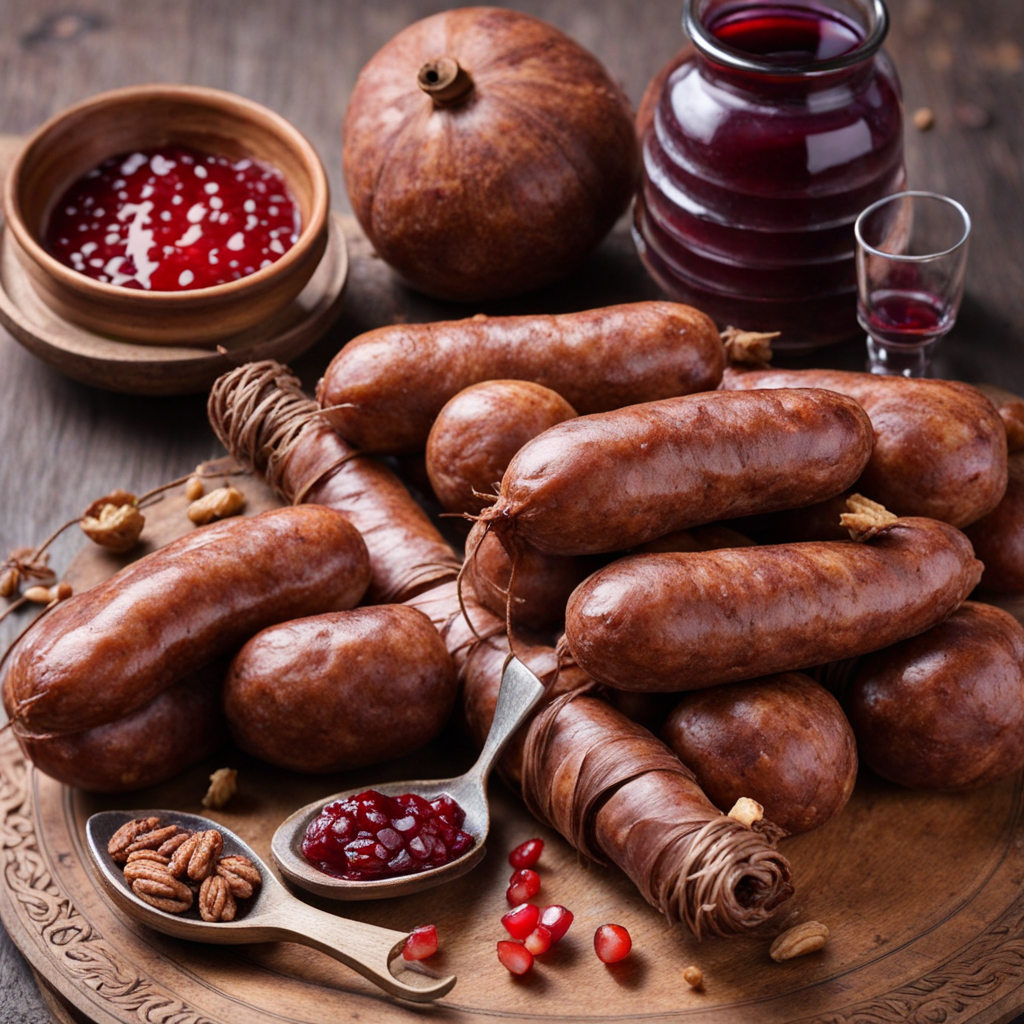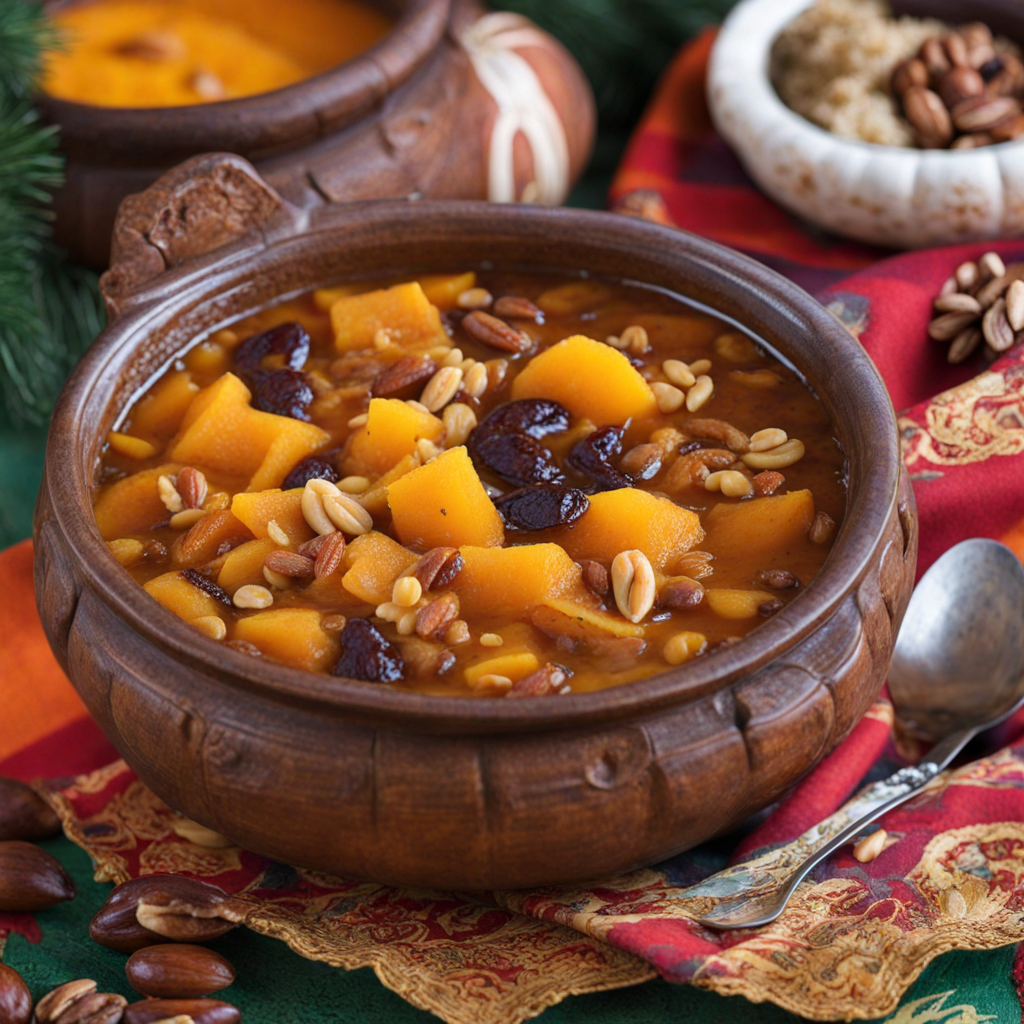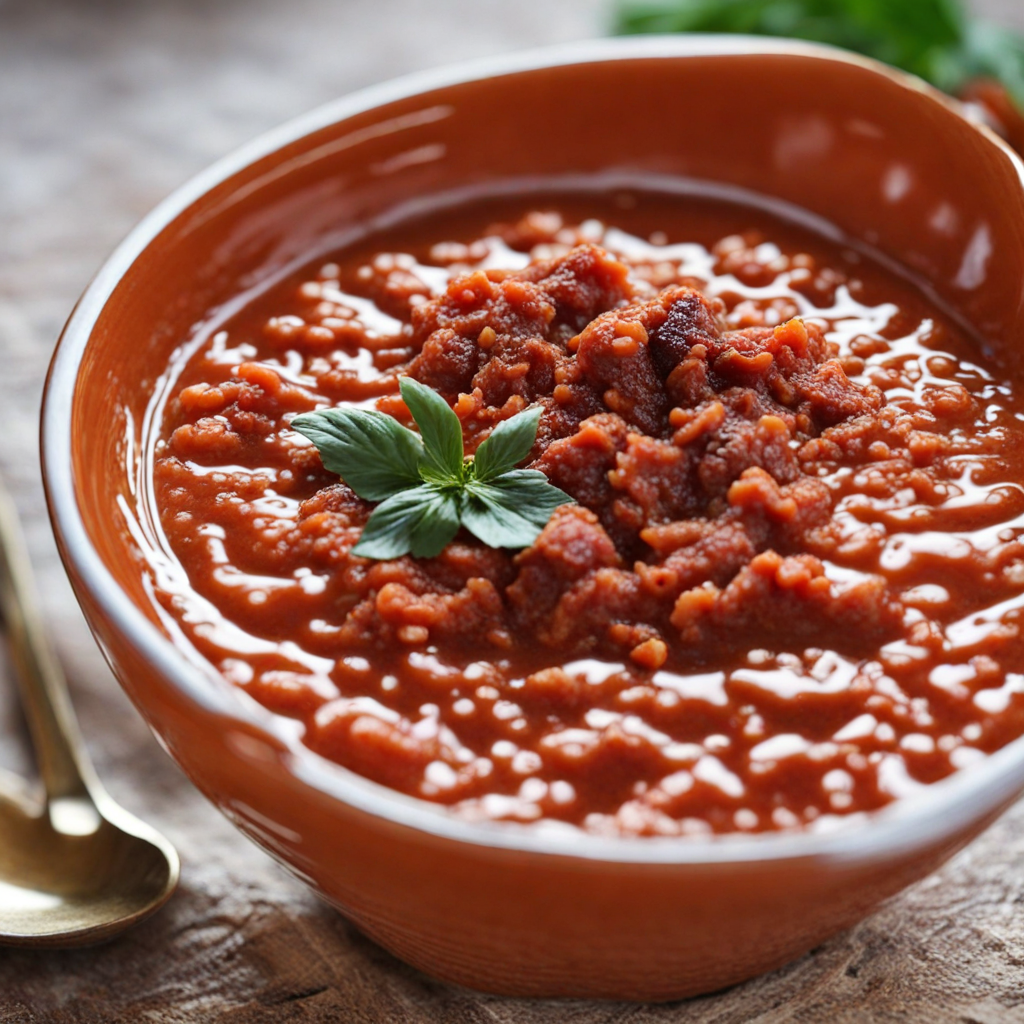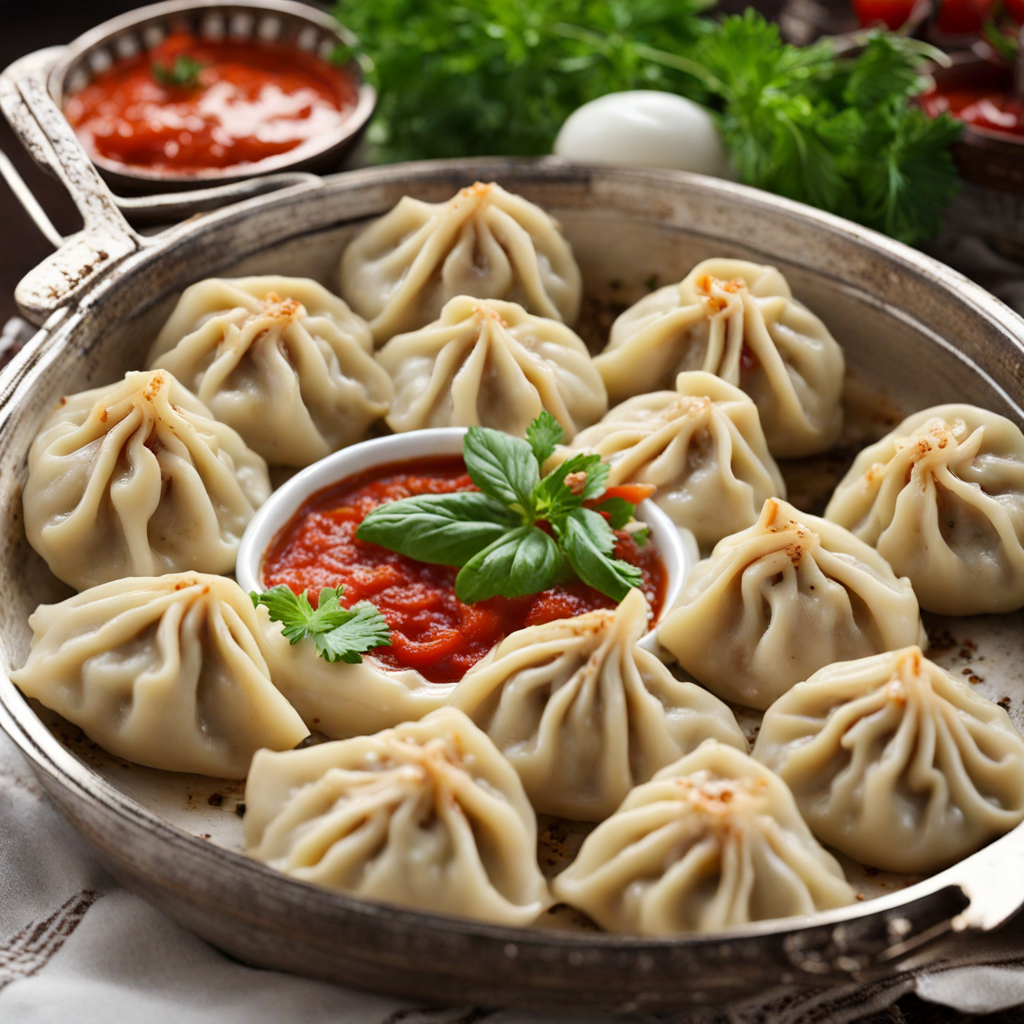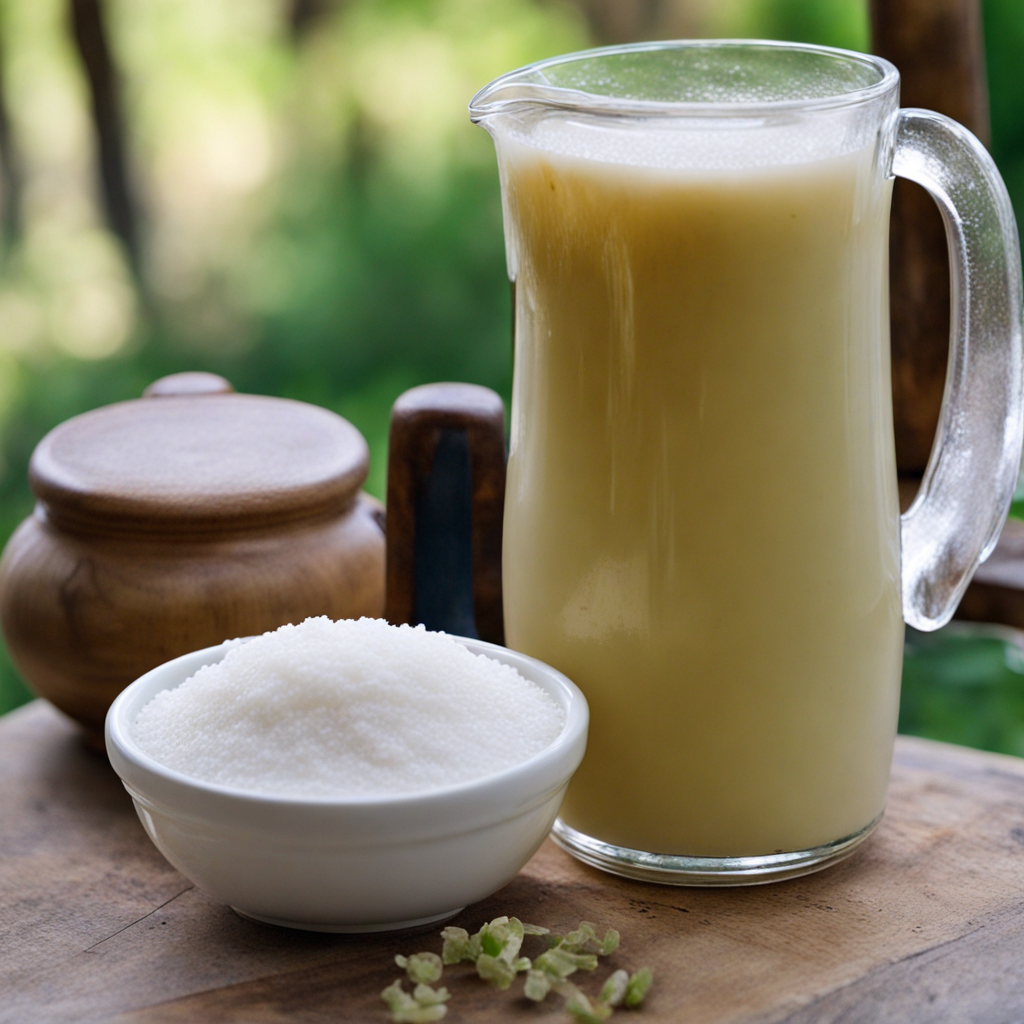Sujukh
Sujukh is a traditional Armenian delicacy that tantalizes the palate with its rich flavors and unique texture. This cured sausage is made primarily from beef, often mixed with lamb or pork, and is seasoned with an aromatic blend of spices such as garlic, coriander, and sometimes even walnuts. The meat is ground finely, ensuring a smooth consistency, and then stuffed into natural casings. After being shaped, it undergoes a drying process that enhances its flavor, resulting in a firm yet tender bite that is truly satisfying. One of the standout features of Sujukh is its robust taste, which is a delightful fusion of savory and slightly spicy notes. The seasoning not only adds depth but also gives a fragrant aroma that captivates anyone nearby. When sliced, Sujukh reveals a beautiful marbled appearance, showcasing the quality of the meat and the careful preparation involved. This delicacy can be enjoyed on its own as a snack, served on a charcuterie board, or incorporated into various dishes, making it a versatile addition to any culinary repertoire. Pairing Sujukh with fresh bread, pickles, or a side of yogurt enhances the experience, allowing the flavors to shine even brighter. Its popularity extends beyond Armenia, as it has found a place in the hearts of food lovers across the region and beyond. Whether you’re savoring it at a festive gathering or simply enjoying it as a gourmet treat at home, Sujukh promises an unforgettable taste adventure that reflects the rich culinary heritage of Armenia.
How It Became This Dish
Origin of Սուջուխ The history of Սուջուխ (pronounced su-jukh) can be traced back to ancient times, deeply woven into the fabric of Armenian culinary traditions. This traditional sausage is made primarily from a mixture of ground meat, typically beef or lamb, combined with a variety of spices, and then encased in a natural casing. The name "sujukh" is believed to derive from the Persian word "sujuk," which means "sausage." However, it is in Armenia that this dish has developed a unique identity, symbolizing not just sustenance but also cultural heritage, communal gatherings, and familial bonds. Historically, the preparation of sujukh was a way to preserve meat before the advent of refrigeration. The method of drying and smoking meats, particularly in mountainous regions, was necessary for survival during harsh winters. In Armenia, where pastoralism and agriculture have been integral to life, sujukh became a staple, showcasing the resourcefulness of the Armenian people. The use of spices such as garlic, coriander, and fenugreek, along with the drying process, not only enhanced the flavor but also helped in preservation, allowing families to store it for extended periods. Cultural Significance The cultural significance of sujukh transcends mere sustenance; it is a symbol of Armenian identity and tradition. Often associated with celebrations and family gatherings, sujukh is commonly served during holidays, festivals, and special occasions. During the harvest season, families might come together to prepare sujukh, creating a communal atmosphere where recipes are passed down through generations. This practice reinforces the bonds between family members and instills a sense of pride in Armenian heritage. In addition to its role in family traditions, sujukh has a notable place in Armenian hospitality. It is often served as an appetizer or snack during gatherings, paired with bread and cheese or accompanied by fruits and nuts. The act of sharing sujukh is a gesture of goodwill and fellowship, emphasizing the importance of community and togetherness in Armenian culture. Furthermore, sujukh's presence at social events illustrates the blend of flavors and traditions that characterize Armenian cuisine, reflecting the broader historical influences that have shaped the nation. Development Over Time As Armenian communities migrated and spread across different regions, the preparation and consumption of sujukh adapted to local tastes and available ingredients. In the diaspora, particularly in countries like Lebanon, Turkey, and Iran, sujukh began to incorporate local spices and methods, resulting in variations that still maintain the core essence of the original dish. These adaptations highlight the resilience of Armenian culinary traditions, which continue to thrive despite external influences and challenges. The modern era has seen a revival of interest in traditional Armenian foods, including sujukh. In recent years, there has been a growing movement to preserve and promote Armenian culinary heritage, especially among younger generations. Artisan producers are now crafting high-quality sujukh, often using organic ingredients and time-honored techniques, bringing a renewed focus to this age-old delicacy. These efforts not only celebrate the flavors of Armenia but also contribute to a broader awareness of the importance of food heritage in cultural identity. Regional Variations While sujukh is commonly associated with Armenia, it has regional variations that reflect the diversity of the Armenian diaspora. In places like Nagorno-Karabakh, the preparation of sujukh incorporates local ingredients and flavors, resulting in distinct versions that are emblematic of the region. Similarly, in Lebanon, Armenian communities have developed their own take on sujukh, often adding unique spices and serving it in various culinary contexts. The Armenian sujukh has also found its way into international cuisine, with food enthusiasts and chefs experimenting with it in fusion dishes. This adaptability speaks to the enduring appeal of sujukh, allowing it to transcend its traditional boundaries and integrate into a global culinary landscape. As more people discover and appreciate this dish, its legacy continues to evolve, ensuring that the flavors of Armenia remain vibrant and relevant. Health Aspects and Modern Consumption In contemporary society, the health aspects of sujukh are being scrutinized as more people become health-conscious. Traditionally, sujukh is high in protein and can be made with lean cuts of meat, making it a nutritious option when consumed in moderation. However, the emphasis on preserving traditional methods has also led to discussions about the use of preservatives and additives in commercially produced varieties. As consumers become more aware of food sourcing and quality, there is a growing demand for artisanal and organic versions of sujukh that align with health trends and ethical consumption. Moreover, sujukh has found its place in modern culinary trends, such as charcuterie boards and gourmet snack platters. The visual appeal of the sausage, with its rich hues and inviting presentation, makes it a popular choice for gatherings and social events. Chefs are also incorporating sujukh into innovative dishes, blending it with contemporary culinary techniques to create unique flavor profiles that honor its traditional roots while appealing to modern palates. Conclusion In conclusion, the story of Սուջուխ is a testament to the resilience and richness of Armenian culinary traditions. From its ancient origins as a means of preservation to its place in contemporary food culture, sujukh embodies the spirit of community, heritage, and adaptation. As it continues to evolve, this beloved sausage remains a cherished symbol of Armenian identity, connecting past and present through the universal language of food. The ongoing appreciation for sujukh, both in Armenia and among the diaspora, ensures that its legacy will persist for generations to come.
You may like
Discover local flavors from Armenia


